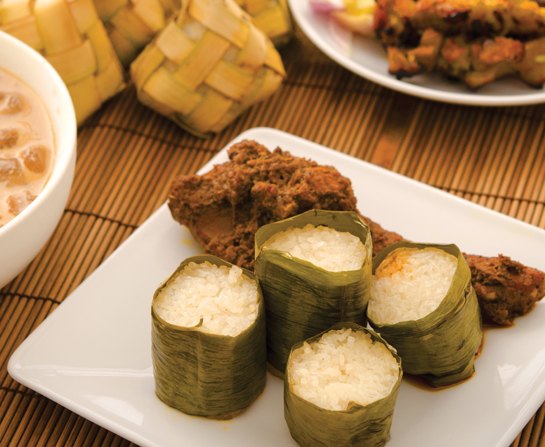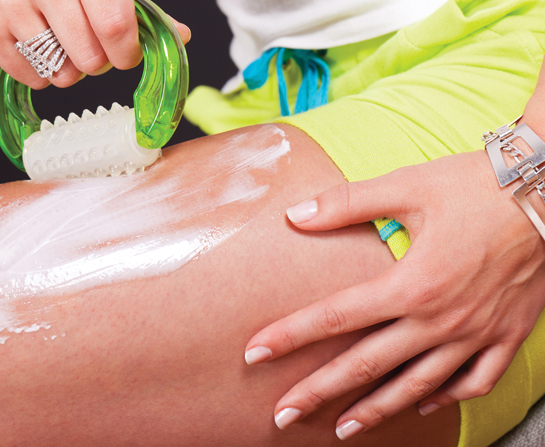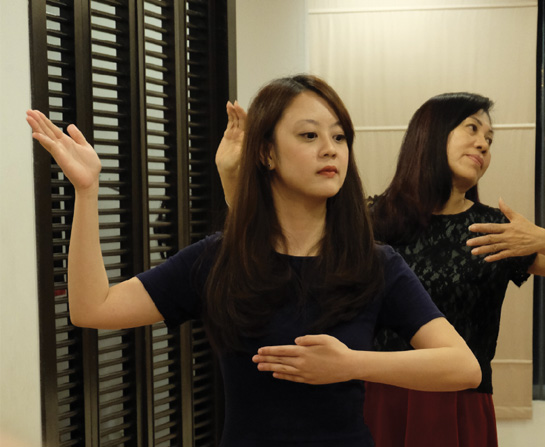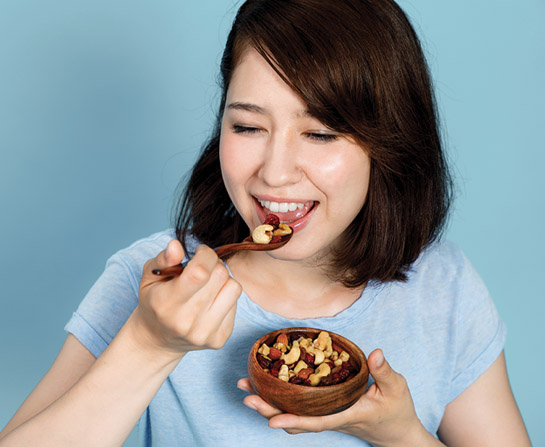Words Hannah May-Lee Wong
Doctors may talk the talk, but how many of them walk the walk (or run the run, for that matter)? When we first encountered Dr Lau Choon Ping for an article on scoliosis, admittedly, we noticed that he is super fit! Scrolling through his Facebook, we saw an array of action shots taken from the various marathons he participated in. When we said we wanted to interview him about his sporting activities, the orthopaedic surgeon immediately told us (and with great enthusiasm) that he exercises with a close-knit group of friends, all of whom are doctors as well.
Upon hearing this, we just had to meet this group for ourselves.
The friendly doctors were more than happy to talk to us about their journey towards fitness. The cheery group of friends consists of Dr Siva Kumar Ariaretnam, Dr Chooi Yue Seng, Dr Badrulhisham Bahadzor, Dr Robert Penafort and Dr Lau Choon Ping.
With mutual support and encouragement, they have all progressed far and achieved much in the realm of fitness and endurance sports. Just last year, Dr Lau reached the pinnacle of triathlons – he completed the notoriously difficult Ironman Triathlon. The others in the group have also racked up a long list of successfully completed endurance events such as full marathons, aquathlons (swim and run), duathlons (run, cycle, run) and triathlons (swim, cycle, run).
And here’s the catch: all of them started this journey only around three years ago.
Their collective message is clear and simple: exercise is good for you, everybody should do it and it’s never too late to start.
In this HealthToday exclusive, the doctors share with us about their respective fitness experiences, training routines, motivations and plans for the future.
Dr Lau Choon Ping Consultant Spine Surgeon Sports Profile: Triathlete (Running, swimming, cycling) Age: 48 |
How did the group meet?
Siva, Chooi and I are orthopaedic surgeons. We trained together in the orthopaedic department of the same university hospital, so we have known each other for a long time – 18 years! Robert was our lecturer. Badrul was introduced to the group when he was part of our relay run team in an event in Putrajaya in 2017.
How did you get the group into marathons?
Most of us were already doing some form of exercise. Robert, Chooi and I played badminton weekly while Siva was cycling all around Penang. I started running back in 2014 after a charity run someone asked me to join. The run was only 10km, but when I completed it, I was surprised to discover that I can run!
At the badminton sessions I was still participating in, all I could talk about was running. And after some pestering, I finally got my friends to run with me. Note that the group hasn’t been doing this very long… only a few years. But it’s possible. You just need to start and be persistent. They went from starting to run to doing a full marathon within a year.
What motivates you to keep at it?
Anyone who exercises regularly would know that exercise makes you feel good. I find that when I stop exercising for a week or two, the body gets so weak and tired.
What do you love about running marathons?
Most people who do endurance sports would agree that after a certain point, the body reaches that neutral zone where we are not struggling with our breathing. We really enjoy that period when we’re quite comfortable just carrying on. Sometimes, we don’t even realize the time or the distance. Only after we’ve finished, we realize how much we’ve done.
I also feel immense satisfaction when I can achieve some of my targets. I always like to challenge myself a little beyond my comfort zone, and when I succeed I feel very happy.
Tell us about your most memorable sports event.
For me, it was definitely the Ironman last year. It was an event of extreme long-distance – the whole thing took about 13 hours or more. I went through a range of emotions: excitement from completing the swim, to feeling pain, to questioning myself as to what I had gotten myself into.
The Ironman Triathlon comprises of 3.8km swimming, 180km cycling and 42km running. In the early parts of the event, I told myself, “I’m performing quite well, maybe I can complete this in a better timing.” I completed my cycling stretch and started running again, but during that 42km run, at about 10km in I started feeling problems – my legs began hurting. At that time my target started dropping: instead of finishing in good time, I aimed to finish in a reasonable time. Then another 10km in, from a reasonable time, my goal dropped to just being able to finish at all.
The last 10km was a real struggle because we needed to pass the finishing point three times. It seemed like every time I was there, I had one more round to go. At the last round, when I finally reached the finishing line, I remember being so excited that I made it. To top it all off, my overall timing was quite good.
Dr Robert Penafort Consultant Orthopaedic and Trauma Surgeon Sports Profile: Marathon Runner Age: 56 |
How did you get started with marathons?
When you think of the word “marathon”, normal people just cannot imagine how someone can run for so long. I had this exact same perception, right until I was 54 years old. I started by running 2km around my house. Then the distance increased until finally, Chooi and I signed up for our first event – a 10km run in 2015. We had never run 10km before. The most we trained was 5km or 6km. We joined the PJ Half Marathon, and that’s when what we thought impossible became possible. It was our beginning.
Any tips on how to push yourself?
Some people are self-motivated – they can wake up early every morning and do it alone; but I’m someone who needs a partner. Since I always need at least another person to train with me, I get a few friends who are willing to exercise together.
Siva is the one who always coaxes us into doing the longer distances. For example, when we’ve done 15km, he says, “Ok, guys, let’s go for 21km!” He even ‘conned’ us into doing a 22.5km run when we thought it was supposed to be 21km. We were cursing him for weeks, right until the race was over. We were exhilarated because we finished it. I think that’s how we, as a group, carry each other forward.
When you participate in an event where there are thousands of people, the energy is so high. You will find yourself flying at a pace that you could never do during your training. The next thing you know, the event is over, and the exhilaration is indescribable. This will push you to the next level and the next.
The trick is to train in small doses and increase the distance every week. Do things at your own pace, but make sure you keep on increasing. Don’t get stuck at 5km and run that same distance every week. You’ve got to do little bit more and join events to motivate yourself.
What’s your training or exercise routine like?
On a regular week when there are no events, I probably spend three times a week exercising. If there is an event, I would go four times a week. Once a week, I do hill training which means 8km or 10km on a hill. Another day of the week, I’ll go to the gym. During the weekend, I do a longer distance – maybe 15km or 18km. Sometimes, I would even do a 30km run when preparing for a full marathon. If I miss these exercise sessions, whether it’s because I am overseas or have other commitments, I really feel like something is missing in my life.
What motivates you to keep exercising?
Keeping fit motivates me. Exercise allows oneself to feel much better, healthier and that’s what keeps me going.
Also, I often get patients who are overweight and they are having problems with their backs and knees. I have to tell them to eat healthy and exercise, but it’s much better when I am a living example.
Dr Chooi Yue Seng Consultant Orthopaedic Surgeon Sports Profile: Triathlete (Running, swimming, cycling) Age: 48 |
How did you get started?
For me, this has all been part of a journey towards self-discovery. When I was younger, I never had the time to do these sorts of things. Studying medicine, I had to sacrifice and study, spend years and years in university, head buried in books. At this stage of my life, I realized that work-wise, I am where I want to be, so it’s time to explore new things.
As Robert mentioned, my debut event was a 10km run at the PJ Half Marathon back in 2015. During that first run, my body was in Pain City and my mind was screaming at me to stop. But as we recovered at the finish line, we eventually found ourselves planning our next running event. The great satisfaction of finishing the marathon had morphed into a strong sense of accomplishment and pride. This would prove to be a recurring theme in all our runs.
What keeps you motivated?
When you join all these activities, you’ll get into contact with different groups of people. For me, I’ve been introduced to the swimming people, the biking community, the running community and the tri-community. They’re all very interesting people from all sorts of different backgrounds. It’s a form of networking that is also a healthy distraction from work.
What is your training schedule like?
It depends on the goal. I have a tri-coach who discusses my goals with me. I just want to better my time and finish events well, and that translates into the amount of training I must do.
I used to train twice a day, but it was more than my body could handle so now I train once a day.
How do you find the time?
You’d be surprised. If you document the things you do in a day, you’ll realize that you waste a lot of time unnecessarily. If you patch all that time together, you can make one hour, and one hour is all you need every day to get that quality training.
What are your future goals?
Of all the three sports I do, I am quite decent in my swimming. I like swimming and, being a low impact sport, it’s something you can carry on until old age.
Initially, I had plans to retire on a cruise ship and be a medical officer on board. See, I have pretty much planned out my retirement! Seriously though, a few weeks ago, Badrul and I signed up for a lifesaving course. With what happened to the boys stuck in the cave in Thailand, I found that search and rescue is a noble thing to do. Since I have a medical background, my aim eventually is to extend into lifesaving. I am also quite interested in learning how to scuba dive.
Dr Badrulhisham Bahadzor Consultant Urologist Sports Profile: Triathlete (Running, swimming and cycling) Age: 45 |
How did you get into triathlons?
When I first started, I just wanted to look good. I was getting a bit overweight at the time, so I wanted to lose weight and build muscle. I started going to the gym, and then I became fit. After that, I thought I should take up something, so I started running.
When I first started, I could only run one kilometre and it was so painful. I kept at it and was determined to join an event. My first one was in 2016, which I finished in good time. I joined more and more events until, after a year, I considered taking up other things. I didn’t know how to swim, so I thought maybe that’s the thing I should try!
It wasn’t easy. I searched for a coach and took up private lessons. It took me one whole year to learn how to swim and I felt like giving up so many times.
Eventually, I participated in an aquathlon in Putrajaya at the end of 2017, which marked my first time swimming in an open water environment. The event was 750m of swimming and 5km of running. At the end of it, it was another milestone achieved.
I continued swimming and running, and I have since joined Oceanman and other events. Then, seeing Lau complete the Ironman last year, I wanted to give it a go. So I got a bike. I did my first triathlon early this year and I hope to participate in Ironman by the end of the year.
How do you keep motivated?
I always try to set objectives and for me, events are my objectives. If I have an event every month or two months, I’ll always be trying to work towards achieving good results for that event.
Tell us about your most memorable event.
Coming from a person with no swimming background, to be able to swim in the ocean is the best thing that has happened to me in a long time. Completing the 2km swimathon in Port Dickson was probably my most memorable event.
I’m 46 this year and I started learning how to swim at 45. Previously, I couldn’t even float. For those who are learning to swim later in life, you will go through many hurdles. You will want to quit, and I went through that phase many times. After six months, I still couldn’t do it and I thought I was just not born to swim. But my coach told me to just keep persisting. One day, it was like a light bulb suddenly went on and I began swimming.
What are your future goals?
I am also interested in lifesaving. I once saw a little boy drown in a pool. He was five years old. I tried resuscitating him, but he died. This was a first-person experience that made me want to learn to swim even more and also learn lifesaving. Eventually, I hope I can teach kids how to swim. I think it is a very important life skill to have from early on.
Dr Siva Kumar Ariaretnam Consultant Orthopaedic Surgeon Sports Profile: Duathlete (Running and cycling) Age: 46 |
What motivates you?
I’d have to say that my friends in the group motivate me. If not for them, I would never have started running marathons. When we have to get up at 5am on a Sunday, the thought of hanging out with the bunch, getting breakfast, cracking jokes with one another… that’s a very big driving force. That’s the good thing about a group.
What do you love about endurance sports?
You know, in the beginning, I thought I needed music to run. I borrowed headphones and bought Bluetooth earphones, but now I don’t use them. I don’t need to listen to anything and I don’t need music to distract me from the run. The run itself is like a drug, and when I tell people this, they think I’m crazy. There are days when I get up at 4.30am to run 30km alone and it’s not something people normally do. But to me, it really is a form of relaxation. The exercise and the good feeling I get when running is enough motivation for me. And it really helps to clear my mind.
Sometimes, when climbing a mountain in the middle of the afternoon on my bike, I’ll be struggling and sweating a lot. But when I complete my objective, I’m always in awe of what I’ve accomplished. I also have issues with cramps… I would reach a point where I am cramped out and I can’t run anymore. I’d be lying on the road before getting back up and walking home. But still, I would do it again. It would never set me back. I’ve got to find out why it happened and overcome it. I’ll ask myself if it could be caused by nutrition, lack of fluids or training. That’s what consumes my thoughts every day, and it’s uplifting. When I was cycling in Penang, my friends and I would either talk about our previous ride or the next event. I was never alone in this; there was so much to think about and look forward to and I feel very fulfilled.
Please give us some tips about avoiding injuries.
Injuries can happen when you are not used to exercising and you overdo it when you start, such as by running long distances every day. Your tendons, ligaments and bones are not accustomed to the stress and it needs time to adapt to the loads you’re bringing. It’s important to start small: start with walking, increase the duration, increase your speed, then throw in a few runs so it becomes a walk-run and eventually upgrade yourself to running when you are ready.
In running literature, there’s this 10 percent rule: every week you do 10 percent more than the last week. If you go beyond the recommended, for example 20 percent, your chances of injuries are five times higher. Even for us, sometimes when we have a free week, we’re tempted to overdo ourselves. But we still need to abide by these rules and increase the running doses slowly.
If you like this article, do subscribe here.


















